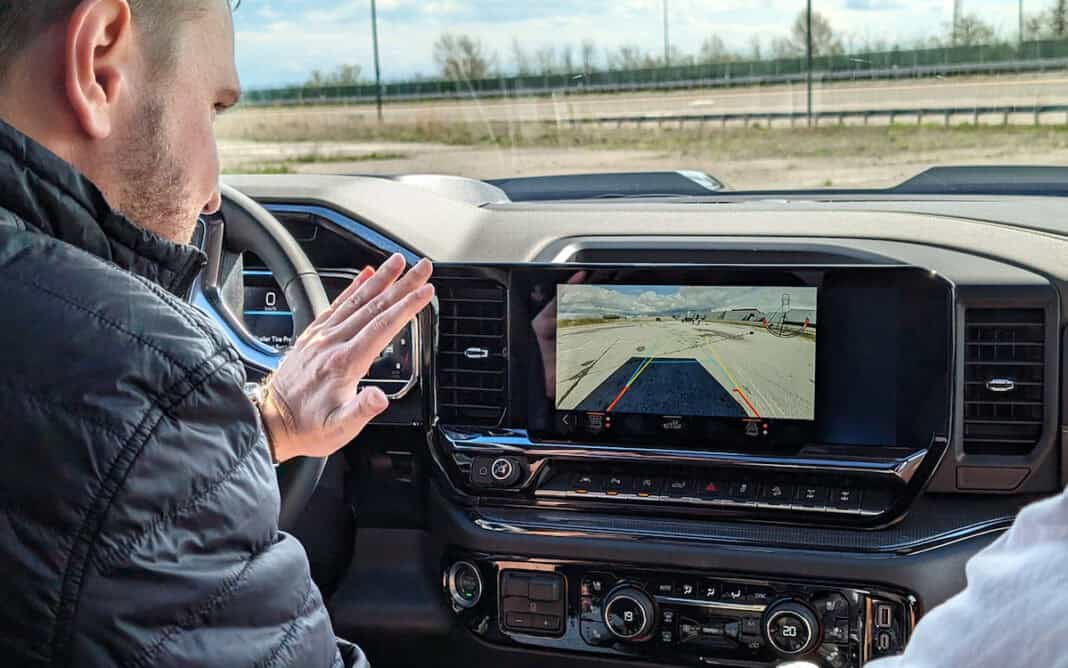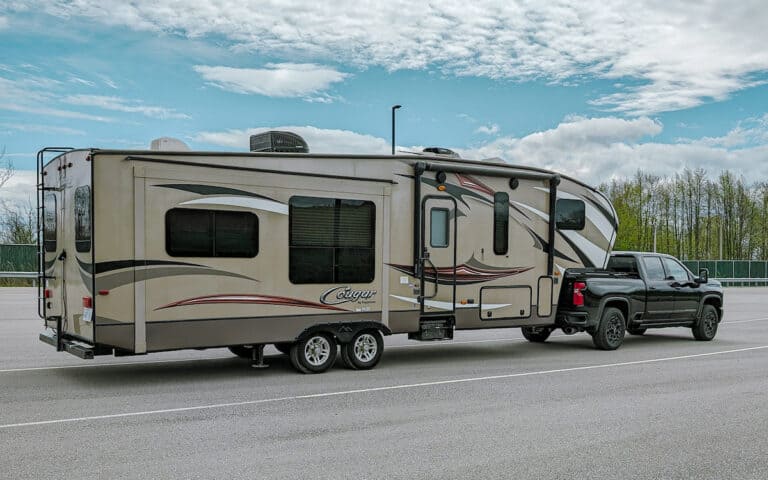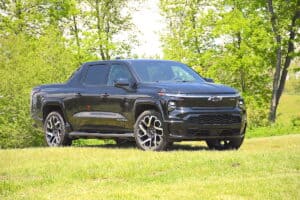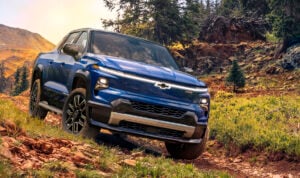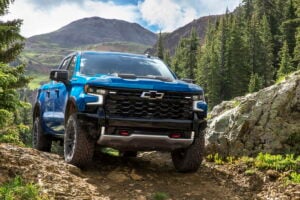- The 2024 Silverado models, including the HD High Country and EV 4WT, showcase impressive towing performance and power, making them suitable for various hauling needs.
- Technologies like Super Cruise, Side Blind Zone Alert, and Transparent Trailering significantly improve driving safety and ease, especially for those new to towing.
- While the advanced tech offers great benefits, there are practical challenges such as the need for additional equipment like rear-facing trailer cameras and the complexity of navigating detours and construction zones.
Oshawa, ON—Pickup trucks are sometimes synonymous with towing, and GM has been working on new technologies to make it easier to haul a trailer around. In this case, it’s Chevrolet pickups where I got to drive four different models towing trailers on test tracks and a major highway in Oshawa, Ontario, Canada.
The two-kilometre or roughly 0.62 mile McLaughlin Advanced Technology Track (MATT), a part of GM’s Canadian Technical Centre, served as the test track for a series of briefings and events inviting the press to get behind the wheel and lug various trailers around. Given the site sits adjacent to an assembly plant that’s been revived to build pickup trucks, it’s fitting this kind of testing goes on as much as it does.
Smooth Driving with the Silverado HD High Country
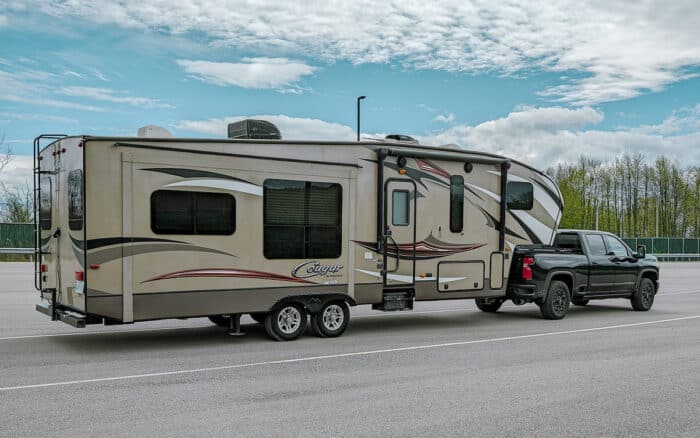
Driving an RV around the four-lane track behind the wheel of the 2024 Silverado HD High Country felt smoother than I thought, especially having better viewpoints around it. Rather than purely relying on mirrors, the vehicle’s infotainment screen provided plenty of visual context over how things were looking back there.
Towing with the Silverado EV 4WT
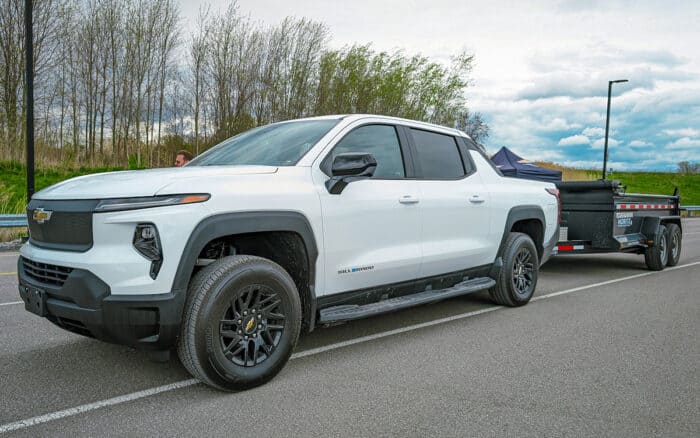
Perhaps the most interesting of the bunch was the 2024 Silverado EV 4WT lugging a 5,000-pound dump trailer like it was no big deal. The Silverado EV has a range of 724 km for the 4WT model (it’s 632 km for the 3WT), and the one I got to drive was the 510 horsepower variant, though would’ve really liked to try the 754 hp one to see how much power it can truly bring to the road.
Hauling a trailer naturally affects overall range but GM reps couldn’t provide precise figures. Still, it’s got some real power, with the 4WT capable of towing 10,000 pounds (it’s 12,500 pounds for the 3WT).
Real-World Testing with the 2024 Silverado LD High Country
The 2024 Silverado LD High Country was the pickup set to hit the road on the highway amid local traffic, towing an enclosed snowmobile trailer. An otherwise unremarkable drive became more challenging on the way back to the MATT because of construction and a collision that blocked two lanes on the highway. Forced to take an off-ramp earlier than planned, necessitating changing lanes and then detouring through residential areas to get around the gridlock, it made for an interesting look at the technology.
Evaluating Super Cruise and Safety Features
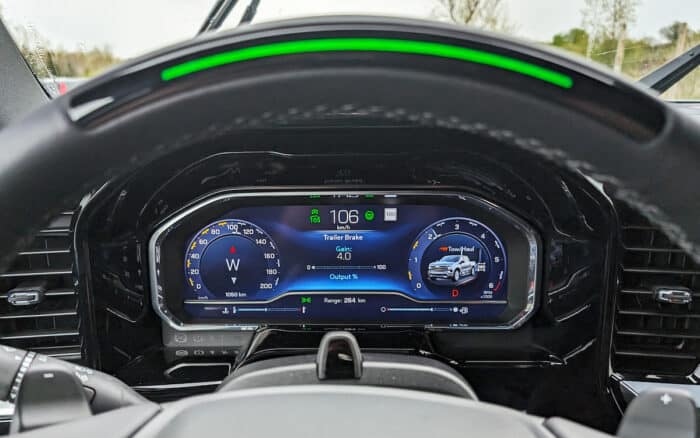
I tried Super Cruise, GM’s autonomous driving mode, which performed smoothly, and I particularly liked how it takes into account the trailer’s weight so that it knows to calculate when to apply the brakes based on the distance you’ve set. Very nice to have when rolling along the highway.
Features like the Side Blind Zone Alert also proved effective in averaging the truck and trailer’s size on the road. A red rectangle — what GM likes to call the “red carpet” — appears on the infotainment screen, showing coverage next to both, taking a lot of the guesswork out of knowing when you have the clearance to move over.
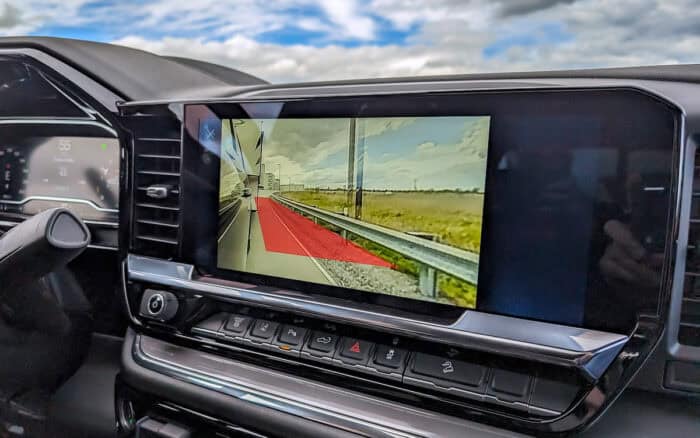
For total trailering rookies like myself, it really feels like peace of mind because I didn’t have to look at my side mirrors multiple times to make sure I could change lanes. The highway detour would’ve certainly felt more challenging otherwise.
Advanced Trailering Features and Limitations
Editor’s Notes:
- Complexity and User-Friendliness: The advanced towing technologies, while innovative, may be overly complicated for average drivers, requiring additional learning and adjustment.
- Additional Costs: Some features, like the rear-facing trailer camera, are not included and must be purchased and installed separately, adding to the overall cost.
- Dependence on Specific Equipment: Certain functionalities, such as tire pressure notifications, require GM’s proprietary sensors, limiting flexibility and potentially increasing maintenance costs.

What’s neat is the in-vehicle infotainment trailering app lets you set the type and size of the trailer you’re towing to apply the blind zone accordingly. Through it, you can also do a trailer light test, tire pressure, monitor temperature, and theft alert in case someone tries anything. For newcomers to trailering, there is also a step-by-step guide on how to connect one to the vehicle.
Some of these features are contingent on what trim you have, meaning that tire pressure notifications only apply when you have GM’s own sensors on them. Additionally, these details are also tied to GM’s myChevrolet mobile app on iOS or Android, so you can just add them to another vehicle when necessary.
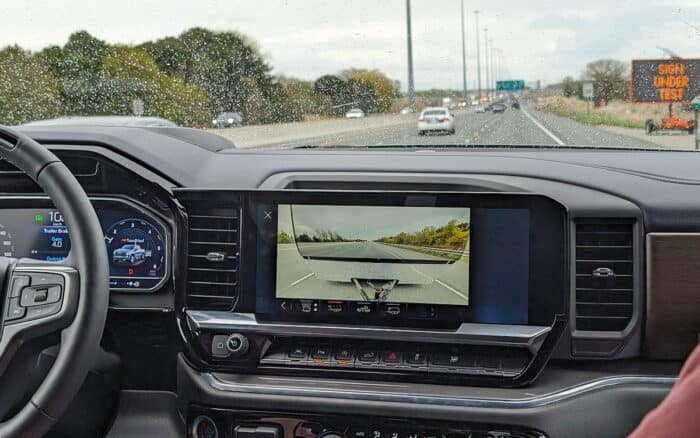
Transparent Trailering, which was first introduced a few years ago in the GMC Sierra Heavy-Duty, is a constant feature throughout. It utilizes the 14 cameras on the Silverado and stitches together the rear views of both the truck and the trailer for a clearer sense of what’s behind you. Flip the turn signal, and it switches over to the red carpet Blind Zone.
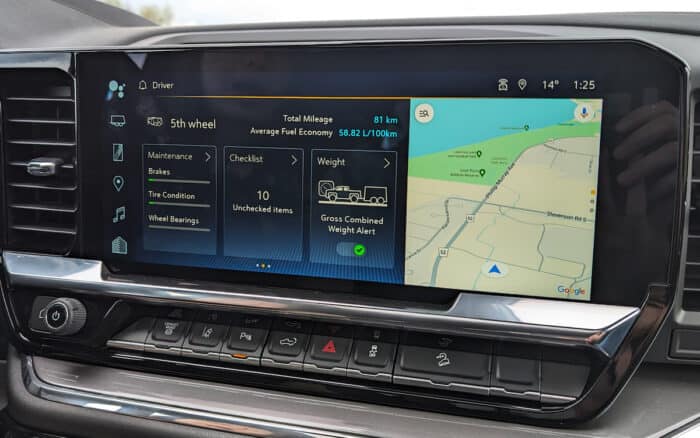
The catch to all this is the one camera not included in the array on the Silverado and the trailer is the one actually facing behind the trailer. You would have to buy one separately and install it with the wiring yourself to complete the full view of that rear blind spot. If you want to take it even further, you could install a camera into the trailer itself, which you could also view from the infotainment screen as well.
Hands-On Parking Test
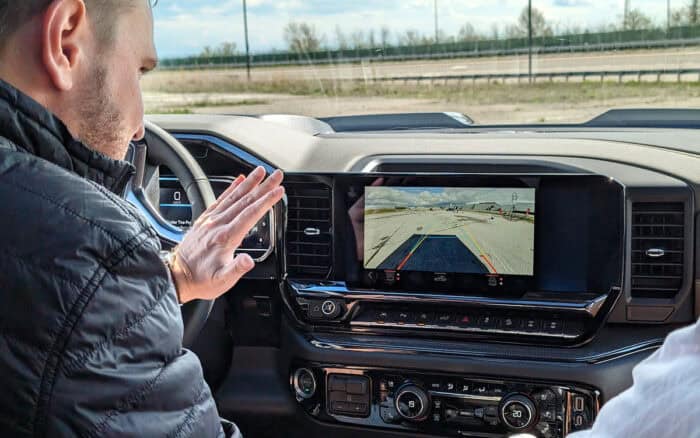
In the last demo, I had to park a 2024 Silverado LD ZR2 Bison with a snowmobile trailer by backing it in between a set of pilons. As someone with no real experience doing it before, the backup camera behind the trailer certainly helped get an idea of where it could go, but it was the visual lines on the infotainment screen that acted as guides. Yellow lines appear as safer trajectories, whereas red lines indicate an angle that’s too sharp for the trailer’s size.
Takeaway
I’m not sure I’ll be towing or trailering anything anytime soon myself, but I must admit, there was a feeling of security while doing it, knowing what was going on around the trailer. Lane changes and reversing are two of the most challenging things to do, and precision matters when you have something valuable back there.
The fact that the technologies are also available in the Silverado EV means GM will likely continue to double down on what it’s been cooking at this facility.

